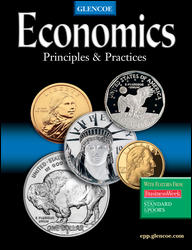
Economics Principles & PracticesChapter 8: Employment, Labor, and WagesChapter OverviewsChapter 8 presents statistics on the civilian labor force and unionization, reviews the development of the labor movement, and offers a discussion of wage determination and other labor issues. Section 1 presents the growth of the labor movement from its roots in craft unions and then industrial unions. Organized labor was generally unpopular until the Great Depression, but labor made great strides during the 1930s and did not lose public favor again until after the end of World War II when the Taft-Hartley Act was passed in 1947. Section 2 reviews the four kinds of arrangements between labor unions and management. These include the closed shop (now illegal), union shop, modified union shop, and agency shop. Collective bargaining is used to resolve most differences between labor and management. However, when collective bargaining fails, several other methods are available to settle labor disputes, including mediation, arbitration, fact-finding, injunction, and seizure. Section 3 explains the factors that help determine wages. Economists divide labor into four noncompeting labor grades based on a worker's education, training, and skills. These categories include unskilled labor, semiskilled labor, skilled labor, and professional labor. The traditional theory of wage determination relies on the market forces of supply and demand. The theory of negotiated wages argues that the relative strength of a union is also a factor when determining wages. Section 4 explores several trends and issues in today's economy. The first is the continuing decline of union membership and influence since the end of World War II. The second is the income gap between men and women, and policies such as set-aside contracts, which are designed to remedy it. The third is the rise of part-time workers. The last is the issue of the minimum wage, which is measured in current dollars, inflation-adjusted dollars, and as a percent of the average manufacturing wage. |  |















